North Vietnam, 3. Congress of the Young Workers Union, March 18th, 1961, Michel Nr. 158-159; Two stamps were issued in perforation 11:0. One with a nominal of 2 xu (extension value) and one with 12 xu (standard domestic letter rate). Again these stamps come wither on horizontally ribbed and vertically ribbed paper, depending on the direction the paper was fed into the printing machine. There is no difference in value. The issue is also subject to color tonality. It is more pronounced on the light blue value and less on the re-orange stamp but exits with both values. Both values were printed on pinkish paper.
Here is a mint pair on horizontally ribbed paper. Note the large selvage on the 2 xu value with the imprinted stamp count aid.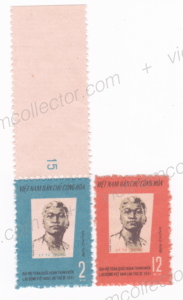
Here are two mint pairs that are printed on vertically ribbed paper. Note the the color shades of the stamps. The left two stamps are lighter in color as compared to the the stamps on the right.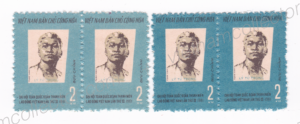
These stamps were part of an experiment of the postal authorities to make live easier for postal clerks. In order to make the selling for larger units (horizontal ribbing) easier to calculate row numbers, counts by row and finally the cost per stamp multiple were printed on the selvage of each sheet. Here are two identical rows of 20 from the top part of the sheet that nicely show how this arrangement worked. For unclear reasons it was abandoned after a few issues.
Postally used 12xu stamp. Postally used stamps are at least ten times rarer than cancelled to order stamps.
Here are very rare and one of a kind of stamp sized water colors that were submitted to postal authorities as an alternative to the finally issued design.
Rare single franking of the 12xu value on a letter to Leipzig, East Germany mailed in April, 1961.
Very rare single franking of the 12xu value but this time on a local letter (full contents preserved) sent from Hanoi to Thai Nguyen. Most local letters were destroyed in the multi-decadal war, the tropical climate or recycling due to raw material shortages so very few of them survive today. Lu-Xa transit cancel on the reverse.
Below is a rare express mail cover (ex Klewitz) that was also sent registered. It holds four of the 2 xu value and ten of the 12 xu value of the Young Workers Union set. The overall postage for the cover amounted to 2.28 Dong. Note the various row value calculator aids printed on the selvage. This was a postal experiment in the early 1960’s that was later abandoned again. Numerical express mail arrival stamp on the reverse. 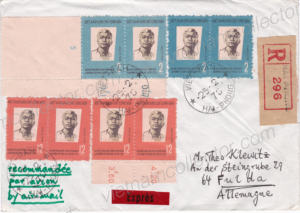
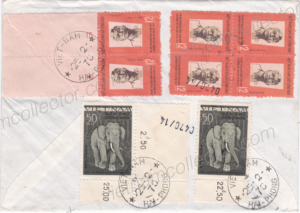
Another Xunhasaba bulletin mailing featuring the 30xu Agricultural Products set, the 50xu Animal stamp and the 2xu Young Worker Union stamp for an overall postage of 82 xu mailed in October of 1962 to a stamp dealer/collector in England. England was still a rare destination in the early 1960’s.
Another Xunhasaba bulletin mailing featuring the 30xu Fruit stamp, the 50xu Wild Animal stamp and the 2xu Young Worker Union stamp for an overall postage of 82 xu mailed in April of 1961 to a stamp dealer/collector in Austria. Austria was still a rare destination in the early 1960’s.
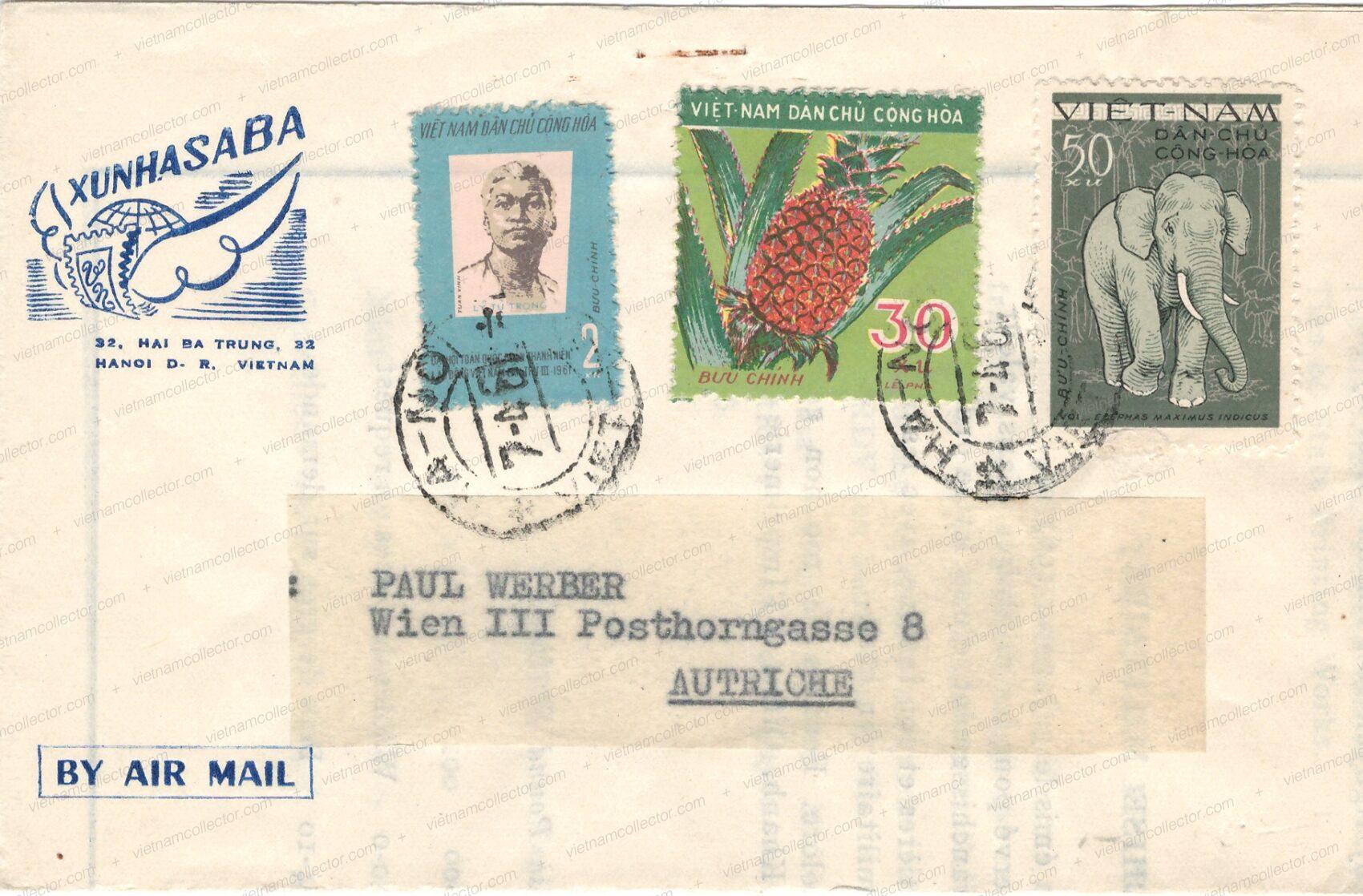
Mixed franking made up of the 4xu Democratic Republic stamp plus the 2xu Young Worker stamp making up the rare 6xu postcard postage that came in force on March 1st, 1960. The card was sent to Brno, Czechoslovakia in September of 1961.
Rare registered express mail letter sent to Klewitz in October of 1980. It carries the entire set plus some other NVN stamps for an overall postage of 4.81 Dong. Late usage of the 2 xu Young Workers Union stamp. Fulda arrival cancel on the reverse. Green Fulda custom cachet on front. Unusual hand-made express mail label.
Registered lettre sent from Quan 5 (Cholon) to Klewitz in June of 1981. There is a single 50 xu KPdSU stamp plus one of the 2 xu Young Worker Union stamps for an overall postage of 7.95 Dong. Green Fulda custom cachet on front.
A multiple currency franking by Xunasaba carrying one of the 500D October Revolution stamps (worth only 50 xu after the 1,000:1 devaluation in March of 1959) plus one of the 2 xu Young Worker Congress stamps in New Dong for an overall postage of 82 xu. This is a very early und hence unusual mailing to the United States of America, a rather rare destination at the time. The bulletin announces the Unity of Cities issue of July 20th, 1961 (Michel Nr. 170-171).
Registration Nr.100510


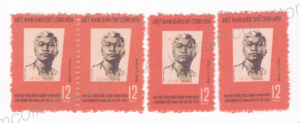

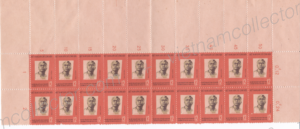
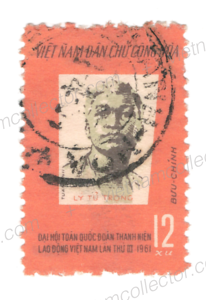
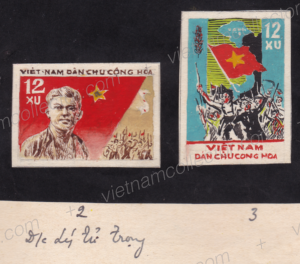

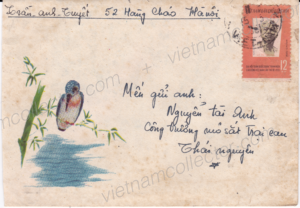
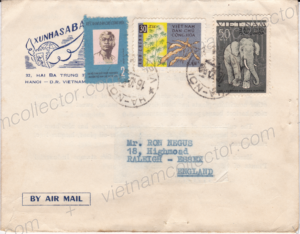
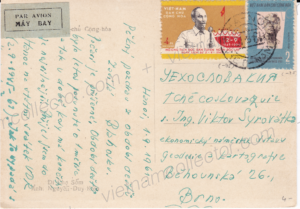
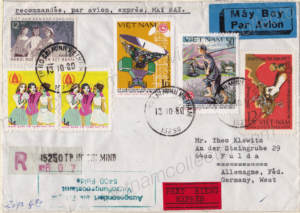
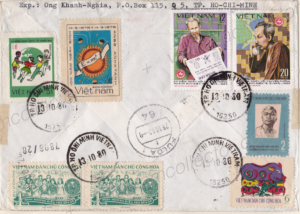
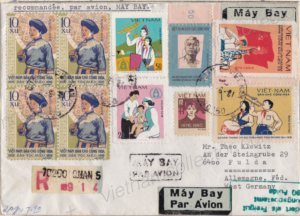
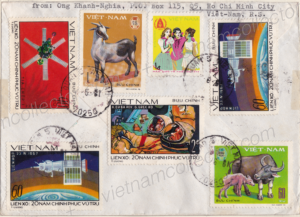

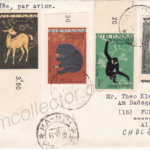
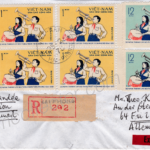


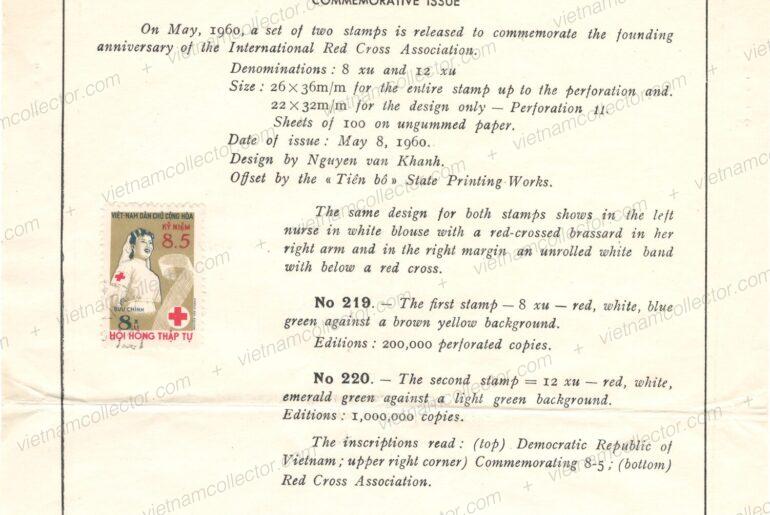
Comments are closed.